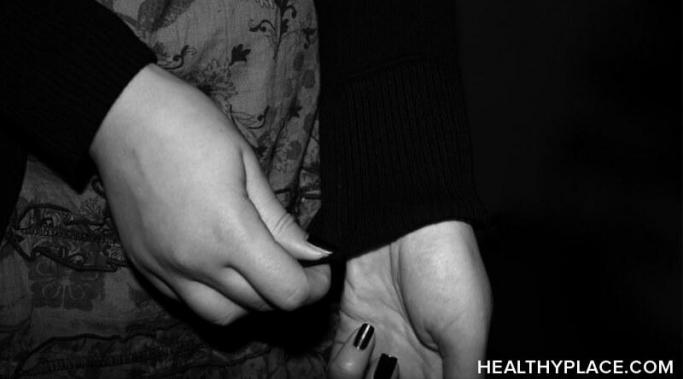Speaking Out About Self Injury
How can there be invisible self-harm? Self-harm is assumed to be apparent to the eye — a reasonable assumption given that self-harm is a physical act performed on the physical body and that self-harm is used at times as a way of making invisible, psychic pain visible and concrete. But not all self-harm can be seen. Invisible self-harm is just as dangerous as visible self-injuries.
I stopped hiding my self-harm scars so I could feel free. Let me explain: self-harm insists on making its history known. It leaves evidence of itself on your skin in marks both faint and bold and in times of both struggle and recovery. These self-harm scars can make you self-conscious, remind you of a painful past, and draw unwanted attention. The common impulse among self-harmers and those with a history of self-harm is to hide them. But hiding self-harm scars, for me, just never felt like freedom.
Self-harm is often used as a way to cope with difficulties that the person is not, for whatever reason, emotionally equipped to handle. For many of those who use self-harm in this way, that reason is an underlying mental illness (or illnesses).
You would think that the reasons to recover from self-harm would be obvious. In a way, they are. You would also think that those who currently suffer from self-harm tendencies would recognize these reasons and use them to motivate their recovery. In a way, they do. But that is the thing about mental illness: no one chooses to be sick. Rationale tells us that the drawbacks of self-harm far outweigh the benefits but our sick brains tell us otherwise. The trick is to access and strengthen our rationale — that is, the healthy part of our brains that still exists somewhere inside of us — to do what we know we need to do (Mental Illness Isn't a Choice, But You Still Have Choices). Finding reasons to recover from self-harm is part of the process.
Recovering from self-harm is hard for reasons too numerous to list. The process of self-harm recovery is often lonely, confusing, messy, and dark. Feelings of hopelessness, feeling trapped, and feeling flooded with whatever emotions led us to self-harm in the first place are not uncommon, nor are the urges that cloud our thoughts and tempt us toward relapse in our self-harm recovery.
You see this stigma of self-harm for attention played out in TV shows, movies, and often even in real life: A person engages in self-harm. This behavior is noticed by another person, either because the self-harmer has confessed or wears visible scars. People debate among themselves about whether this self-harming behavior warrants confronting the person and/or seeking professional help for the person. Then, as if on cue, someone suggests they forget about the whole thing, and says something along the lines of, "She's just self-harming for the attention."
Questions about self-harm scars and dating, sex and intimacy cause many people with visible self-harm scars to worry: "Are self-harm scars a turn-off?" "Should I try to hide my scars from my partner?" "When is it appropriate to explain my scars to a partner, and how can I best approach this type of conversation?" What are the right answers to these questions about self-harm scars and dating?
My name is Kayla Chang, and I’m thrilled and honored to be a part of the Speaking Out About Self-Injury blog at HealthyPlace. I hope that by sharing my thoughts and experiences in a way that is informative, vulnerable and — most importantly — honest with you, we can build an ongoing network of support and have meaningful, productive conversations around the issue of self-injury (also known as self-harm) together.
I have been in self-harm recovery for about 10 years now, often dealing with what triggers my self-harm urges. During that time, it has always been difficult for me to identify what exactly is triggering my self-harm urges. It wasn't until I went to my last therapist that I got the tools to figure out my underlying patterns of self-injuring. In this post, I want to go over the three main reasons behind why I started self-harming. Maybe your triggers for self-harm urges are similar.









